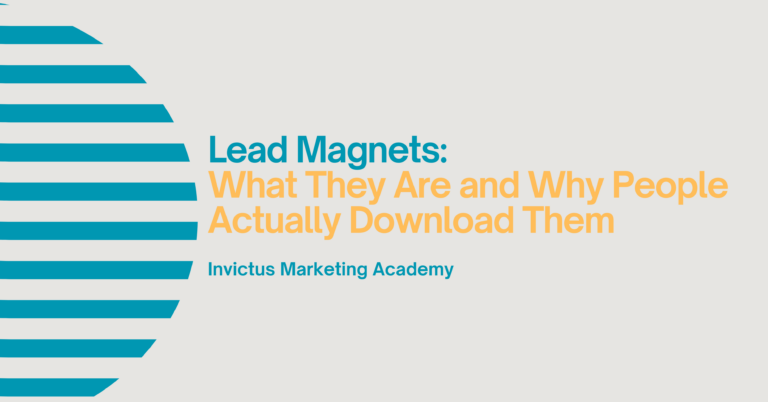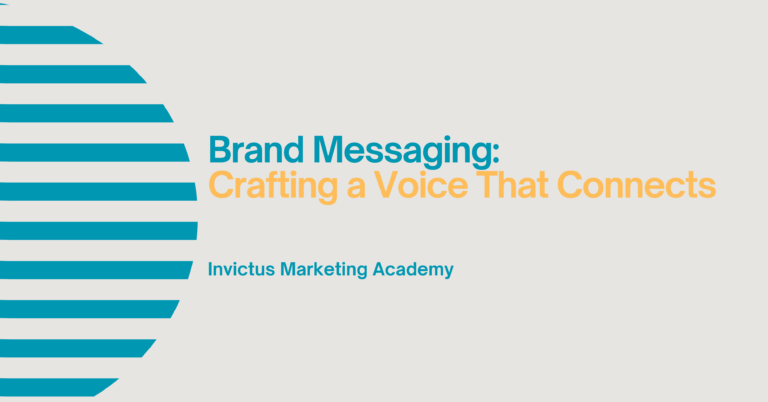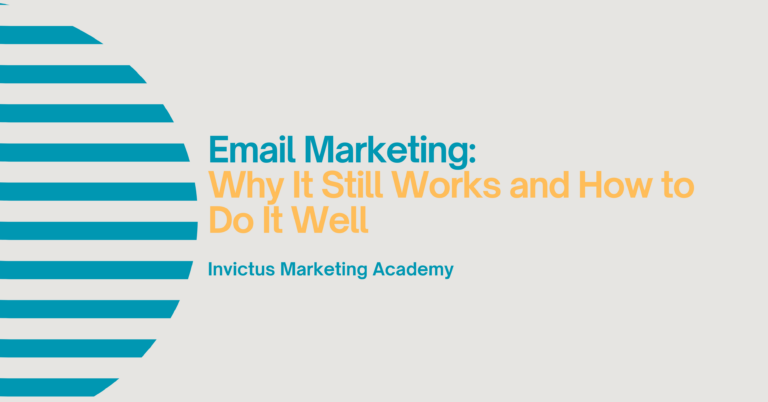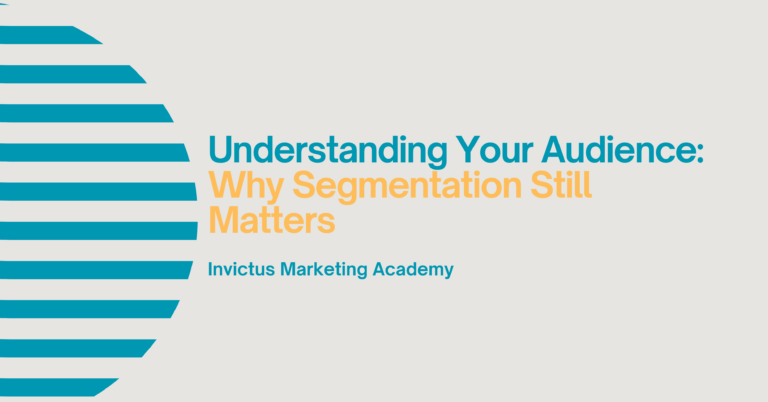Understanding Customer Personas: Your Guide to Better Marketing
Marketing is most effective when it feels personal — when your message speaks directly to a person’s needs, values, and situation. But how can you do that at scale? That’s where customer personas come in.
Customer personas, also called buyer personas or audience profiles, are fictional yet realistic representations of your ideal customers. They help you humanise your marketing, focus your messaging, and create products, services, and content that actually resonate with the people you’re trying to reach.
But not all personas are created equal. If you’ve ever seen a persona like “Meet Sally, 35, likes lattes and Pinterest”, you’ll know how shallow (and useless) some can be. Effective personas go deeper — into motivations, behaviours, and barriers. They guide action, not just decoration.
In this article, we’ll explore what makes a good customer persona, how to build one, and how to use it to sharpen your marketing across the funnel.
Why Customer Personas Matter
At its heart, a customer persona is a decision-making tool. It helps you focus on the right people with the right message in the right place.
Here’s why personas are so valuable:
- They improve relevance – Knowing who you’re speaking to makes your copy, visuals, tone, and content much more targeted and effective.
- They align your team – From marketing to sales to product development, everyone works from the same picture of who the customer really is.
- They guide campaign planning – Instead of guessing what channels to use or what message to lead with, you base decisions on defined user profiles.
- They help spot opportunities – A strong persona can reveal gaps in your offer, your user journey, or your messaging — helping you innovate with purpose.
- They prevent the “everyone trap” – Trying to market to everyone often results in appealing to no one. Personas help you prioritise.
Done well, a persona becomes a lens through which all your marketing decisions are viewed.
What Makes a Useful Persona?
A persona should be rooted in real data, not assumptions, and offer enough depth to support real-world decision-making. It should go beyond surface traits and dig into what drives your customer to act.
Here’s what to include:
1. Basic Demographics (where relevant)
- Age range
- Location
- Job role or sector
- Income level (if important to your pricing)
- Education level
Keep these light. They help with targeting but shouldn’t dominate your persona.
2. Goals and Motivations
- What does this person want to achieve in life, work, or this purchase?
- What outcomes are they really buying?
Understanding their goals helps you position your offer as the bridge between “where they are” and “where they want to be”.
3. Pain Points or Challenges
- What’s frustrating them right now?
- What problems are they actively trying to solve?
- What might prevent them from taking action?
These insights fuel your messaging — especially in blog posts, landing pages, and sales conversations.
4. Buying Triggers and Decision Factors
- What makes them start searching for a solution?
- What criteria do they use to decide?
- Who else is involved in the decision?
This helps you create content and messaging that matches their decision-making process.
5. Preferred Channels and Content Formats
- Where do they hang out online?
- What type of content do they consume (blogs, podcasts, videos)?
- Do they prefer detailed information or quick summaries?
This shapes your channel strategy — where and how you show up.
6. Typical Objections
- What might stop them buying from you?
- What do they worry about, mistrust, or misunderstand?
Objections are gold. If you can answer them clearly in your content, you move the person closer to conversion.
How to Build Personas That Work
Building effective personas takes a mix of research, observation, and testing. Don’t just sit in a room and invent one — go find real voices and data to build from.
Step 1: Start With Existing Customers
- Look at your best clients or most loyal users. What do they have in common?
- Interview them: Ask what brought them to you, how they found you, and what mattered most in choosing your offer.
- Review support tickets, testimonials, or sales calls — all of which reveal patterns in needs and language.
Step 2: Use Analytics and Audience Tools
- Use tools like Google Analytics to see what demographics or interests are common among your website visitors.
- Social media insights (especially LinkedIn or Facebook) can reveal trends in location, job title, or online behaviour.
- Email software often shows open rates and click-throughs by segment, giving clues to engagement patterns.
Step 3: Map Out 2–3 Key Personas
Avoid trying to capture everyone. Focus on your primary customer types.
For example:
- Alex the Aspiring Freelancer – 28, London-based, works full-time but wants to transition into freelancing. Seeks clarity, confidence, and tools to start.
- Sam the Scaling Agency Owner – 42, Newcastle, running a small creative agency looking to streamline systems and scale without burning out.
- Priya the Corporate Marketing Manager – 35, Leeds, managing campaigns across multiple departments, values professionalism and proven ROI.
Each one has different motivations, needs, and objections — so your content and messaging should reflect that.
Step 4: Test and Refine
Personas aren’t static. As your business grows or your audience evolves, revisit and adjust them.
- Run A/B tests with different messaging to see what resonates.
- Create content aimed at one persona and track response.
- Speak to your audience regularly — surveys, interviews, even informal feedback.
Your best personas are living tools — updated as you learn, not stuck in a PDF forever.
Using Personas in Practice
Here’s how personas shape your marketing:
- Copywriting – Write landing pages or emails as if you’re speaking to one persona. Use their language, not your jargon.
- Content creation – Choose topics and formats that address that persona’s challenges or goals.
- Ad targeting – Use personas to build lookalike audiences on Facebook or segment your Google Ads.
- Product positioning – Tailor features and benefits to match what that persona values most.
- Customer journeys – Design funnels or onboarding that reflect each persona’s needs at each stage.
Personas don’t just help marketers. They help designers, developers, sales teams, and founders stay aligned.
A Practical Example: Using Personas in a Launch Campaign
Let’s say you’re launching a new online course to help business owners build a personal brand.
You have two personas:
- Emma, the Early-Stage Founder – Motivated but unsure, needs step-by-step guidance.
- Raj, the Consultant Looking to Scale – Time-poor, wants credibility and shortcuts.
You create:
- A blog for Emma: “How to Build Your Personal Brand When You’re Just Getting Started”
- A LinkedIn ad for Raj: “Ready to Be Known as a Thought Leader? Here’s the Fast Track.”
- A webinar that appeals to both, but your email sequences afterwards are split — one for confidence-building, the other for credibility and visibility.
This approach leads to higher open rates, more sign-ups, and stronger engagement — because you weren’t trying to talk to “everyone”.
In Summary
Customer personas are the bridge between data and empathy. They help you understand your audience in human terms — so your marketing doesn’t just inform, it connects.
To make personas work:
- Base them on real data, not guesses
- Go beyond demographics — focus on goals, pain points, and behaviours
- Use them in every part of your marketing, from strategy to execution
- Update them regularly based on what you learn
A good persona doesn’t just describe a customer — it gives your marketing a voice, a direction, and a much higher chance of success.





